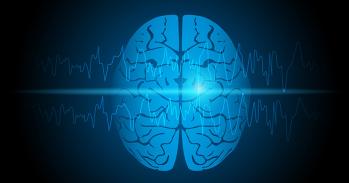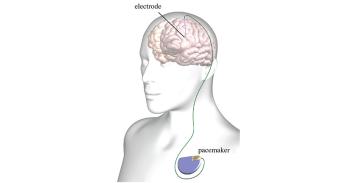Simple, non-invasive tools to measure brain function, currently being used by Cambridge University scientists, are on show this week at the Royal Society's Summer Science event.
Simple, non-invasive tools to measure brain function, currently being used by Cambridge University scientists, are on show this week at the Royal Society's Summer Science event.
Researchers from Cambridge's Brain Repair Centre and Department of Physiology, Development and Neuroscience have been using the two new devices to provide an objective measure of the time it takes the brain to make a decision.
It is hoped that they will help in the diagnosis and treatment of neurological disorders, including Parkinson's and Huntington's diseases. Because they offer an objective measure of brain function at minimal inconvenience, they may also be useful for tracking the progress of such conditions and thus assessing treatments for them.
One device works by projecting targets to look at from tiny lasers. It then measures where we are looking by the reflection of infra-red light, which it bounces off the eye. An analysis of the reaction time and how it varies from trial to trial can then be used to determine when there is a problem.
The measurements rely on the tiny eye movements, known as saccades, that we make to focus on an object that suddenly pops into view.
Every time we make one of these movements we are deciding which part of our field of vision is the most worth looking at. The decision involves communication between several parts of the brain. Accordingly, when the reaction time for a saccade increases, it is usually because this communication is impaired.
Saccades are the most common movement our body makes, typically occurring two or three times a second; some take as little as one fiftieth of a second. Consequently, a great deal of information about what is going wrong can be gathered in a few minutes, either in the clinic or at home.
The group are also using a second method to detect impaired brain function, by measuring the time it takes to tap on buttons. This provides information about movements generated from within, rather than responses to external stimuli.
More than 20 million people across the globe are affected by neurodegenerative disorders, which can be difficult to diagnose.
Whilst genetic tests exist for Huntington's, there is no way of telling when those carrying the abnormal gene will actually develop the disease. In the case of Parkinson's, several other conditions have similar symptoms in their early stages and there is no definitive method for a diagnosis.
The tests are currently being assessed by Chrystalina Antoniades and Dr Roger Barker, based at Cambridge's Brain Repair Centre, in collaboration with Dr Roger Carpenter at the Department of Physiology, Development and Neuroscience.
Visitors to the event can try the tests for themselves, and can take away their own reaction time ruler to test others.
Also on display at the Summer Science exhibition is an interactive exhibit on mathematical models for disease prevention. The exhibit is a collaborative effort from researcher at Cambridge's Department of Plant Sciences, the Institute for Animal Health and Rothamsted Research.
Members of the public have the chance to come up with ideas for controlling the spread of infectious diseases in animals and livestock, then put them to the test.
Chris Gilligan, the University's Professor of Mathematical Biology, said: “Mathematical modelling is crucial to our ability to prevent and control infectious diseases such as bluetongue. We have developed a simple computer model, which can be tailored to a variety of specific infections. We hope that visitors will be able to see how powerful our model is in diseased prevention and control.”
The Summer Science Exhibition is free and open to all members of the public. It is open today from 10am to 4:30pm and is being held at the Royal Society, 6-9 Carlton House Terrace, London.
The nearest Tube stations are Charing Cross and Piccadilly Circus. The 12, 15, 453, and 13 bus routes all stop near the Royal Society.
This work is licensed under a Creative Commons Licence. If you use this content on your site please link back to this page.





